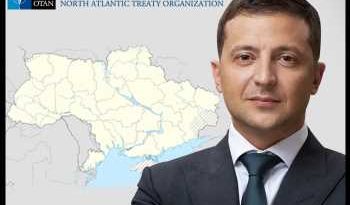When debt makes climate change worse
(NYTIMES) – How does a country deal with climate disasters when it is drowning in debt? Not very well, it turns out. Especially not when a global pandemic clobbers its economy.
Take Belize, Fiji and Mozambique. Vastly different countries, they are among dozens of nations at the crossroads of two mounting global crises that are drawing the attention of world financial institutions: climate change and debt.
They owe staggering amounts of money to various foreign lenders. They face staggering climate risks, too. And now, with the coronavirus pandemic pummelling their economies, there is a growing recognition that their debt obligations stand in the way of meeting the immediate needs of their people – not to mention the investments required to protect them from climate disasters.
The combination of debt, climate change and environmental degradation “represents a systemic risk to the global economy that may trigger a cycle that depresses revenues, increases spending and exacerbates climate and nature vulnerabilities”, according to a new assessment by the World Bank, International Monetary Fund (IMF) and others. It comes after pressure from academics and advocates for lenders to address this problem.
The World Bank and the IMF are planning talks in the next few months with debtor countries, creditors, advocates and ratings agencies to figure out how to make new money available for what they call a green economic recovery.
The goal is to come up with concrete proposals before the international climate talks in November and ultimately to get buy-in from the world’s wealthiest countries, including China, which is the largest single creditor country in the world.
IMF managing director Kristalina Georgieva has said green recovery programmes have the potential to spur ambitious climate action in developing countries, “especially at a time they face fiscal constraints because of the impact of the pandemic on their economies”.
In the case of Belize, a middle-income country on the Caribbean coast of Central America, its foreign debt had been steadily rising for the last few years.
It was also feeling some of the most acute effects of climate change: sea-level rise, bleached corals, coastal erosion. The coronavirus pandemic dried up tourism, a mainstay of its economy. Then, after two hurricanes, Eta and Iota, hit neighbouring Guatemala, floods swept away farms and roads downstream in Belize.
Today, the debt that Belize owes its foreign creditors is equal to 85 per cent of its entire national economy. The private credit ratings agency Standard & Poor’s has downgraded the country’s creditworthiness, making it tougher to get loans on the private market.
The IMF calls its debt levels “unsustainable”. Belize, said its Minister of State for Finance Christopher Coye, needs immediate debt relief to deal with the effects of global warming that it had little role in creating.
Many Caribbean countries like Belize do not qualify for low-interest loans that poorer countries are eligible for.
The United Nations said on March 31 that the global economic collapse endangered nearly US$600 billion (S$797 billion) in debt service payments over the next five years.
Both the World Bank and the IMF are important lenders, but so are rich countries, as well as private banks and bond holders. The global financial system would face a huge problem if countries faced with shrinking economies defaulted on their debts.
“We cannot walk head on, eyes wide open, into a debt crisis that is foreseeable and preventable,” UN Secretary-General Antonio Guterres said recently as he called for debt relief for a broad range of countries.
“Many developing countries face financing constraints that mean they cannot invest in recovery and resilience.” The Biden administration, in an executive order on climate change, has said it would use its voice in international financial institutions, like the World Bank, to align debt relief with the goals of the Paris climate agreement.
The discussions around debt and climate are likely to intensify in the run-up to the climate talks in November, where money is expected to be one of the main sticking points. Rich nations are nowhere close to delivering the promised US$100 billion a year to help poorer countries deal with the effects of global warming.
Low- and middle-income countries alone owed US$8.1 trillion to foreign lenders in 2019, the most recent year for which the data is available – and that was before the Covid-19 pandemic hit.
At the time, half of all countries that the World Bank classified as low-income were either in what it called “debt distress or at a high risk of it”. Many of those are also acutely vulnerable to climate change, including more frequent droughts, stronger hurricanes and rising sea levels that wash away coastlines.
One widely circulated proposal calls on the world’s 20 biggest economies to require lenders to offer relief in exchange for a commitment to use some of the newfound fiscal space for a green and inclusive recovery.
Find out more about climate change and how it could affect you on the ST microsite here.
Source: Read Full Article

